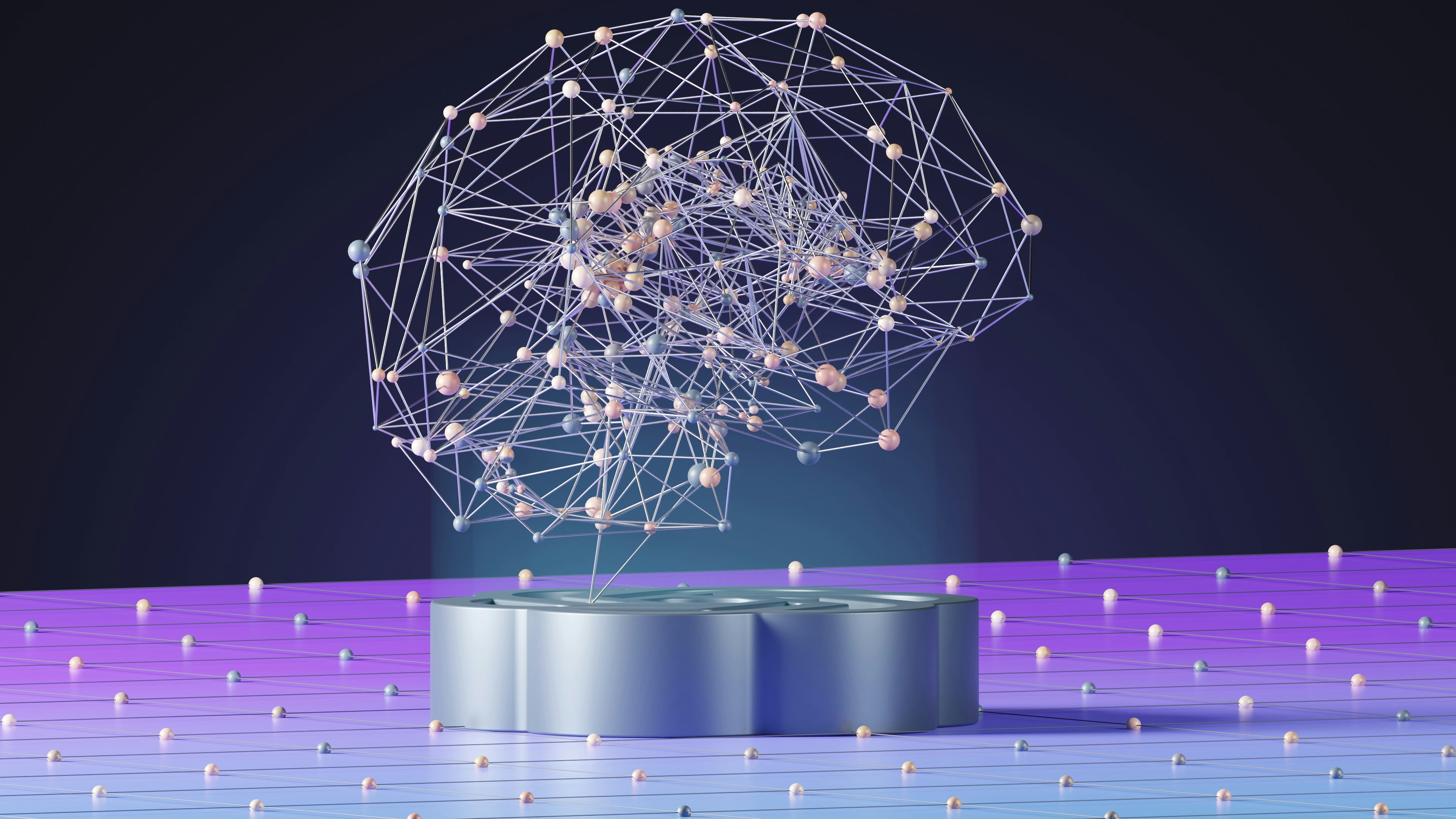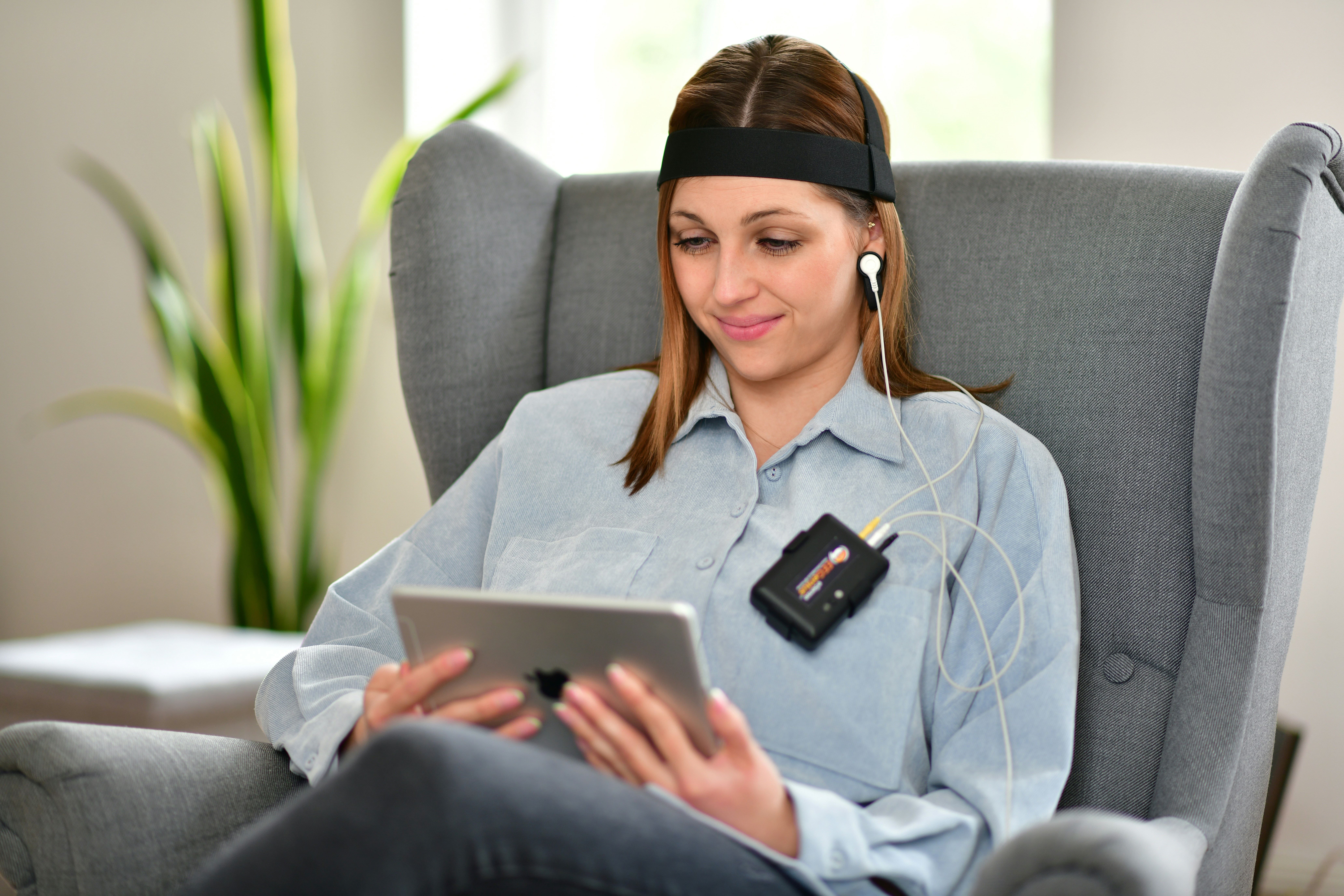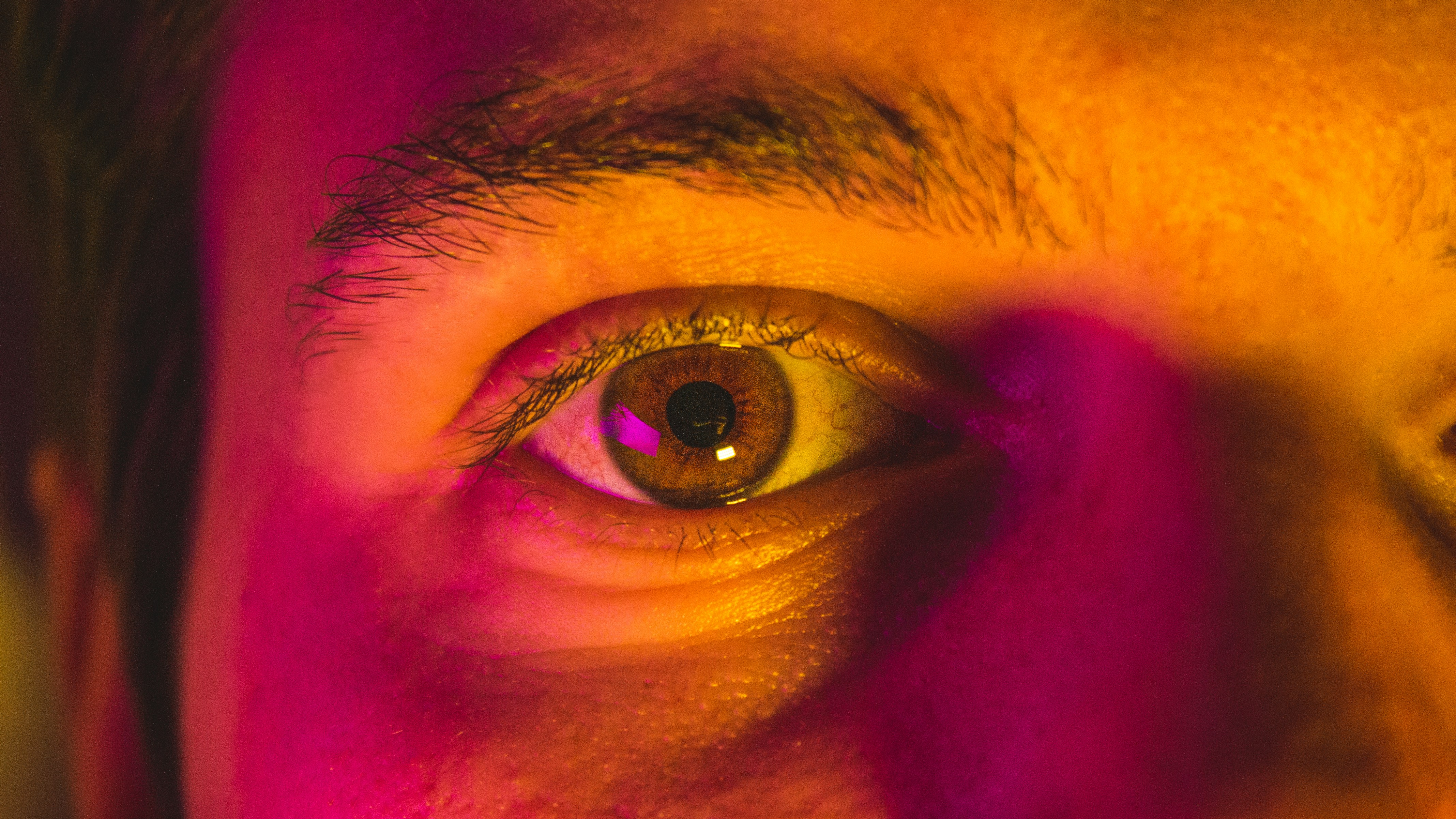Beyond the Totem: AI-Driven Dream Manipulation, The Future Of Lucid Dreaming
 Lakshmi Sarupa Venkadesh
Lakshmi Sarupa Venkadesh
You're walking through a quiet Parisian street when you notice something strange. The buildings on either side of you start to rise, twisting and folding upward until they meet, forming an impossible arch overhead. A surge of exhilaration fills you—a sense of power at knowing that you’re in control of it all, like you’re stepping into a world that bends to your will.
Hmm…feels familiar?
You run your hand along the wall, and with a single thought, you shift the entire scene. The walls dissolve into sand, revealing an endless desert under a blazing sky. Your mind races with the thrill of possibility—what else can I create? What if I just decided to—
But wait. This isn’t Inception.
There’s no dream architect guiding you through, no layers of subconscious built by a team of extractors. Instead, it’s you, in a controlled lucid dream, guided by AI. A headband rests on your temple, tracking your brainwaves, subtly shaping your dreams as you take charge. You’re not just visiting a world of imagination—you’re building it, with the help of technology that brings this surreal experience under your control.
The Dawn of Controlled Dreaming
Lucid dreaming—the art of staying conscious within a dream—has been known and practiced for centuries, a rare skill that allows us to take the reins of our subconscious. Ancient Tibetan Buddhist texts describe dream yoga practices, while modern oneirologists have documented its potential for psychological healing and creative breakthrough.
But what if I told you that this experience of lucid dreaming could be achieved on command, night after night, with the convergence of artificial intelligence and neuroscience?
The Basic Idea, Lucidly Put
AI-driven dream manipulation is about using technology, particularly AI, to monitor, influence, and guide your dreams in real-time. The core idea is to create dream states where you can become aware that you’re dreaming (lucid dreaming) and potentially control or shape your dreams. The process goes somewhat like this:
Monitoring an individual’s brain activity to detect specific stages of sleep (like REM- Rapid Eye Movement) using wearables equipped with EEG sensors that monitor your brainwaves.
Classifying these different sleep stages so that dream manipulation can be initiated only during appropriate stages.
Inducing lucidity with targeted stimulation. Using techniques like focused ultrasound or light and sound cues to stimulate the prefrontal cortex and trigger lucidity (awareness and consciousness while dreaming).
Influencing the dream’s content or mood, enhancing control and direction within the dream. This can be done by feedback mechanisms that adjust the stimuli to help steer the dream’s narrative.
Personalising the experience over time based on user-specific dream patterns and responses.
The Technical Foundation: Deep Learning in Dream Analysis

Modern dream manipulation rests on sophisticated deep learning architectures that process a complex symphony of sleep-related biosignals.
Deep learning algorithms are particularly adept at handling intricate information, like those generated during your sleep. This data includes brainwave activity, REM cycles, heart rate, muscle activity, breathing patterns, and body temperature.
Convolutional Neural Networks (CNNs) process your EEG spatial patterns to predict and categorise different stages of sleep and dreaming, Long Short-Term Memory (LSTM) networks analyse temporal sequences in your sleep stages, and Transformer models identify recurring dream themes and patterns, providing insights into your mental state and areas of interest.
Developing Neural Interfaces for Inducing and Controlling Dreams
Neural interfaces, or brain-computer interfaces (BCIs), interact with the brain's electrical activity to induce or control dreams. Techniques such as transcranial direct current stimulation (tDCS) and transcranial alternating current stimulation (tACS) apply electrical currents to the scalp (no, we’re not trying to electrocute you :) ), potentially inducing lucid dreams. Neurofeedback devices provide real-time input on brain activity, helping individuals control their brain waves to achieve lucid dreaming.
The Halo: Pioneering Dream Control Technology
The most promising development in this field is the Halo device, developed by Prophetic in collaboration with the Donders Institute for Brain, Cognition, and Behaviour.
This pioneering development by the tech startup, has the ambitious goal of inducing and stabilising lucid dreaming using a combination of AI algorithms and focused ultrasound (FUS) technology. The study aims to determine the device's effectiveness in enhancing participants’ control over dream content, marking a significant step in human-computer interaction and neural modulation.
Methodology

Participants in the study wear the Halo device while sleeping, allowing it to continuously monitor their brain activity through high-resolution EEG sensors. When REM sleep is detected, the device initiates ultrasound stimulation targeting the prefrontal cortex - a critical region for self-awareness and cognitive control. This stimulation is designed to enhance the likelihood of lucid dreaming—a state in which one is aware of and can manipulate the dream.
Key data collected includes:
EEG Recordings: These capture brain activity patterns that are characteristic of lucid dreaming, providing insights into neurological indicators of dream lucidity.
Dream Reports: Participants record their dream experiences immediately upon waking, providing qualitative data on lucidity, control over dream narratives, and emotional response to dream scenarios.
Preliminary Results: Early Indications of Effectiveness
Initial results from the study reveal a promising potential for the Halo device to enhance lucid dreaming experiences:
Increased Lucid Dreaming Incidence: Participants report a significantly higher frequency of lucid dreams after using the device compared to baseline readings before the study.
Enhanced Control in Dreams: Reports also indicate a greater ability to control dream environments and storylines, suggesting the device may facilitate improved mastery over one’s dream state.
Quantitative measures reflect these findings:
73% increase in lucid dream frequency among participants.
85% of subjects experienced improved control over their dream content and narratives.
15-minute extension in lucid dream duration on average.
90% dream recall rate post-study, a substantial increase from a baseline of 45%.
Qualitative improvements are also evident:
Greater clarity and vividness in dream visuals.
Enhanced control over the dream narrative, leading to a more immersive and directive dreaming experience.
Notable improvements in emotional regulation, especially during nightmares, allowing participants to navigate distressing dream content with greater ease.
Sustained awareness across different dream scenarios, contributing to an overarching sense of stability within the dream state.
Expert Insights
Professor Guy Leschziner, a neurologist and sleep medicine specialist, views the findings with cautious optimism. He acknowledges the intriguing potential of using ultrasound to stimulate the prefrontal cortex during REM sleep, yet emphasises the necessity of rigorous studies to evaluate long-term impacts and the ethical implications of brain modulation technology. Leschziner advocates for ongoing, detailed research to better understand any extended effects of frequent lucid dreaming.
Future Directions
Building on these promising findings, Prophetic aims to launch an expanded study involving a year-long brain imaging project slated for late 2024. The broader trial will focus on refining the device’s AI algorithms for more precise stimulation, making it suitable for regular consumer use. The ultimate goal is a universally accessible device capable of reliably inducing lucid dreams, appealing to both researchers and the broader public intrigued by the potential of controlled dreaming experiences.
The Halo device’s unique combination of hardware and AI-driven software represents a milestone in dream control technology.
Technical Components
Advanced Sensors: High-resolution EEG electrodes, precision ultrasound emitters, and temperature and motion sensors.
AI Processing Pipeline: Includes real-time signal processing, sleep stage classification, dream state prediction, and ultrasound targeting optimization.
Neural Interface Mechanisms: Focused ultrasound stimulation specifically targets the prefrontal cortex with a closed-loop feedback system to maintain lucidity. Adaptive stimulation patterns are personalised to each participant’s neural responses.
Unlocking Potential: The Magic of AI-Enhanced Lucid Dreaming

Now imagine diving into your subconscious, where aspirations unfold without limits. AI-driven lucid dreaming technology is opening doors to personal growth, creativity, and professional development.
Picture a public speaker transforming anxiety into confidence by rehearsing presentations in vivid dream simulations. Surgeons, too, can practice complex procedures in hyper-realistic dreamscapes, enhancing their skills and reducing stress.
But it’s not just about skills; lucid dreaming is a powerful emotional exploration tool. Navigate dreams where you confront unresolved feelings and rehearse tough conversations, fostering self-awareness and stronger relationships.
Creatives can find inspiration in dreams, painting entire dreamscapes or interviewing characters to enrich their narratives. In health, chronic pain sufferers can practice relaxation techniques in dreams, while individuals visualise movements to reinforce muscle memory and speed up recovery.
The scientific community is also tapping into this potential, simulating climate change effects and prototyping virtual reality experiences in low-risk environments.
As AI reshapes our relationship with sleep, lucid dreaming evolves into a powerful tool for creativity, healing, and excellence. Welcome to an era where our dreams become a canvas for growth and exploration!
Ethical Considerations and Safety Protocols
Using AI and neural interfaces in dream manipulation raises significant privacy and ethical concerns. Collecting and storing sleep and dream data requires strong security measures to prevent misuse. Participants must give informed consent, understanding the risks and benefits. Ethical guidelines are needed to ensure dream manipulation doesn't harm users and to protect their well-being.
In a Nutshell
As we stand at the threshold of mastering dream consciousness, AI-driven dream manipulation technology promises to unlock the full potential of our sleeping minds. While challenges remain in ethics, safety, and technical implementation, the future of controlled dreaming is rapidly becoming reality.
The question is no longer whether we can control our dreams, but how we'll use this extraordinary capability to enhance human experience, creativity, and healing. As research continues and technology evolves, we're witnessing the dawn of a new era in human consciousness—one where the boundary between waking and dreaming becomes a bridge rather than a barrier.
And hence, the totem tumbles to the ground..
Subscribe to my newsletter
Read articles from Lakshmi Sarupa Venkadesh directly inside your inbox. Subscribe to the newsletter, and don't miss out.
Written by
